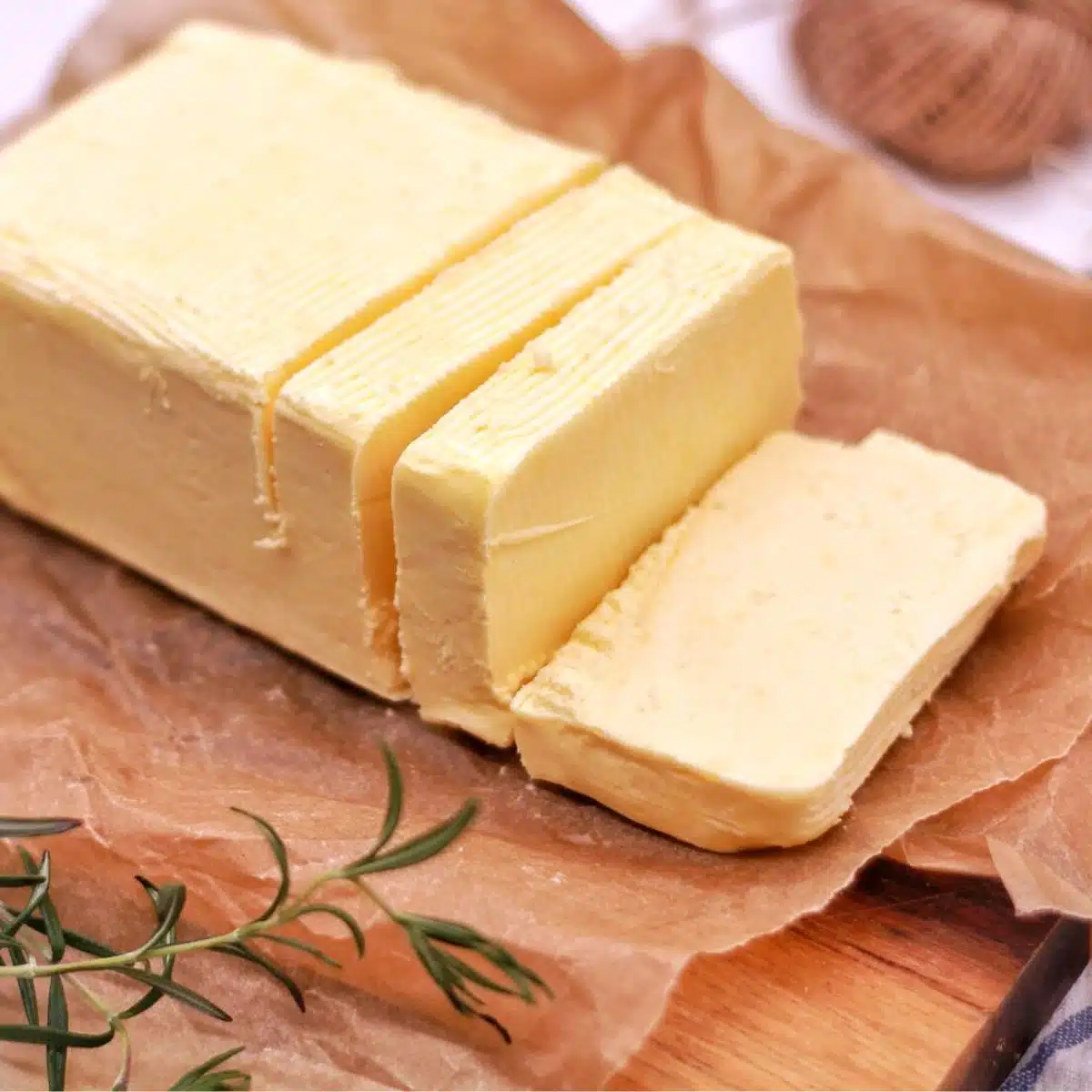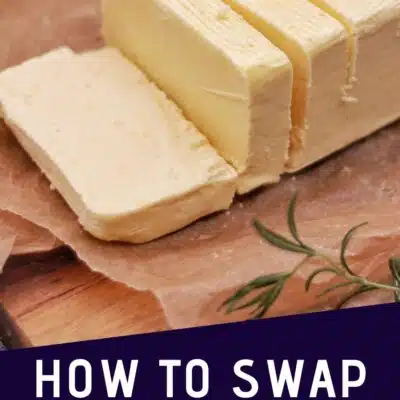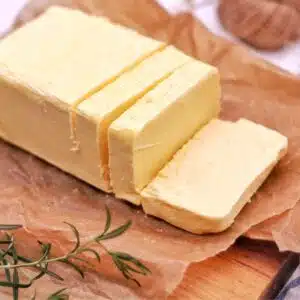Substituting unsalted butter for salted (and vice versa) can be helpful depending on what your recipe calls for and what is in the fridge! I'm going to show you some simple conversions to help your use them interchangeably! Keep on reading to find out everything you need to know!
Using Salted & Unsalted Butter
Butter is used in a ton of different recipes all the way from baking to cooking. You may have noticed at the store that there are two distinct kinds: salted and unsalted. In fact, some recipes just ask for butter, while some specifically request salted or unsalted butter.
Of course, you may only have unsalted butter on hand and don't want to run to the store for some salted butter (or the opposite). Don't worry, I'm going to show you a quick and simple way to swap them out!

Jump to:
What's The Difference
Obviously, the difference between salted and unsalted butter is, of course, salt. Some recipes call for salted and some require unsalted, but do you know why?
Many bakers prefer to have unsalted butter on hand as it gives them complete control over the amount of salt that goes into the dish (which can make a major difference in desserts and other baked goods).
In fact, the exact amount of salt in butter can vary among brands, making it hard to replicate recipes exactly if you aren't consistently using the same brand of butter.
Salted butter, on the other hand, can last much longer in the fridge which makes it more convenient.
If you want to know more about the differences between these two kinds of butter, I have an entire post dedicated to salted vs unsalted butter! Check it out!
Swapping Butters
As a general guideline, for every half cup (or 1 stick) you have of unsalted butter, simply add in ¼ teaspoon of salt for the salted butter equivalence!
If working backward, and you only have salted butter on hand but the recipe calls for unsalted, simply reduce the extra salt added to the dish by ¼ teaspoon per every half cup. It's really that easy!
Unsalted To Salted Chart
| Unsalted Butter | Salted Butter |
|---|---|
| ¼ cup (½ stick) | Add ⅛ teaspoon of salt |
| ½ cup (1 stick) | Add ¼ teaspoon of salt |
| ¾ cup (1½ sticks) | Add ⅜ teaspoon of salt |
| 1 cup (2 sticks) | Add ½ teaspoon of salt |
Salted To Unsalted Chart
| Salted Butter | Unsalted Butter |
|---|---|
| ¼ cup (½ stick) | Reduce ⅛ teaspoon of salt from the recipe |
| ½ cup (1 stick) | Reduce ¼ teaspoon of salt from the recipe |
| ¾ cup (1½ sticks) | Reduce ⅜ teaspoon of salt from the recipe |
| 1 cup (2 sticks) | Reduce ½ teaspoon of salt from the recipe |
Now you know how to substitute unsalted butter for salted! Leave a comment down below and let me know what you think!
📖 More Baking Guides
- How To Activate Yeast - For all of your bread baking needs, check out this article on how to activate yeast!
- Coconut Milk vs Coconut Cream - This super useful guide will come in handy if you enjoy using non-dairy alternatives when baking!
- How To Make Bread Flour - Sometimes you need some bread flour but don't want to run to the store, here's how to make some!
- Topping A Pie Crust - For an extra special finishing touch, here are my favorite pie crust toppings!
- Butter vs Shortening - Choosing to use butter or shortening can make a big impact in your dishes, here's why!
- How To Get Cake Out of a Bundt Pan - Nothing is worse than ruining a perfect cake when trying to get it out of the pan, here are all of my baking hacks to help!
Do you love a recipe you tried? Please leave a 5-star 🌟rating in the recipe card below and/or a review in the comments section further down the page.
Stay in touch with me through social media @ Pinterest, Facebook, Instagram, or Twitter! Subscribe to the newsletter today (no spam, I promise)! Don't forget to tag me when you try one of my recipes!
📖 Recipe Card
Substituting Unsalted Butter for Salted Butter: Homemade Powdered Milk Butter
Ingredients
- ¾ cup powdered milk (whole, not non-fat)
- ⅓ cup water
- ¼ cup oil (olive, avocado, coconut, etc)
- 1 pinch salt (optional for salted butter)
- yellow food coloring (optional)
- butter flavoring (optional)
(Note: 2x or 3x only changes the ingredient list)
Instructions
- In your food processor (or mason jar) add powdered milk, water, oil, and salt, if using. Also, add in the optional butter flavoring and food coloring, adjusting it to taste.
- Blend (or shake), making sure to check occasionally to test the consistency. It will take a few minutes- you want it to be thick and creamy.
- Once the butter has reached your desired consistency (*see note), it can be served immediately. Place in an airtight container in the fridge for up to 2 weeks.
Notes
- You have to use whole fat powdered milk (Nido brand). If you use a non-fat variety, it will not have a very good flavor.
- This butter will not be quite as thick as typical butter, but it will be super creamy and easier to spread!
- Once the butter spends some time in the fridge, it will firm up considerably.
- The yellow food coloring and butter flavoring are not necessary- your butter will still be delicious without them! It is all personal preference.
- To store: Put your butter into an airtight container and place it in the fridge for up to 2 weeks.



Comments
No Comments